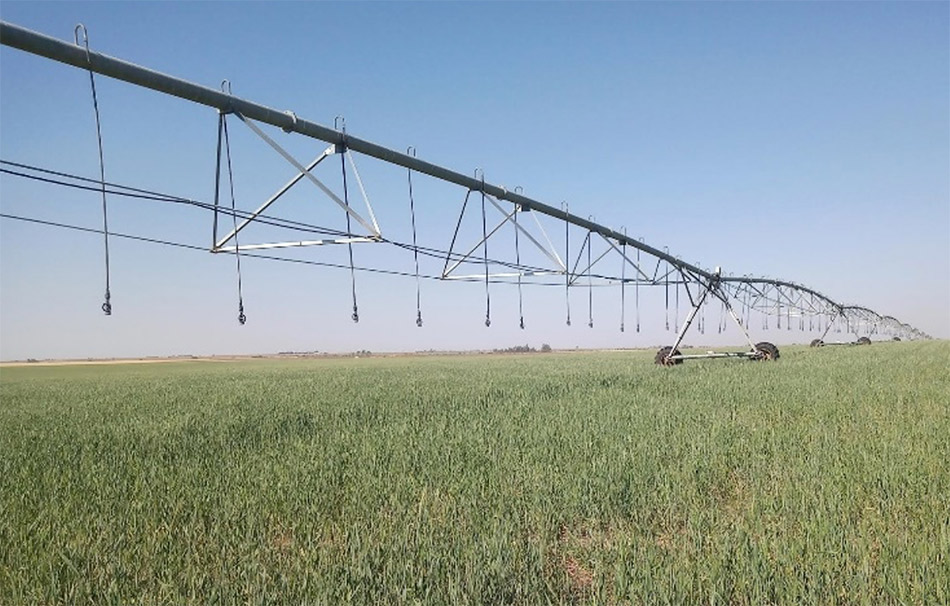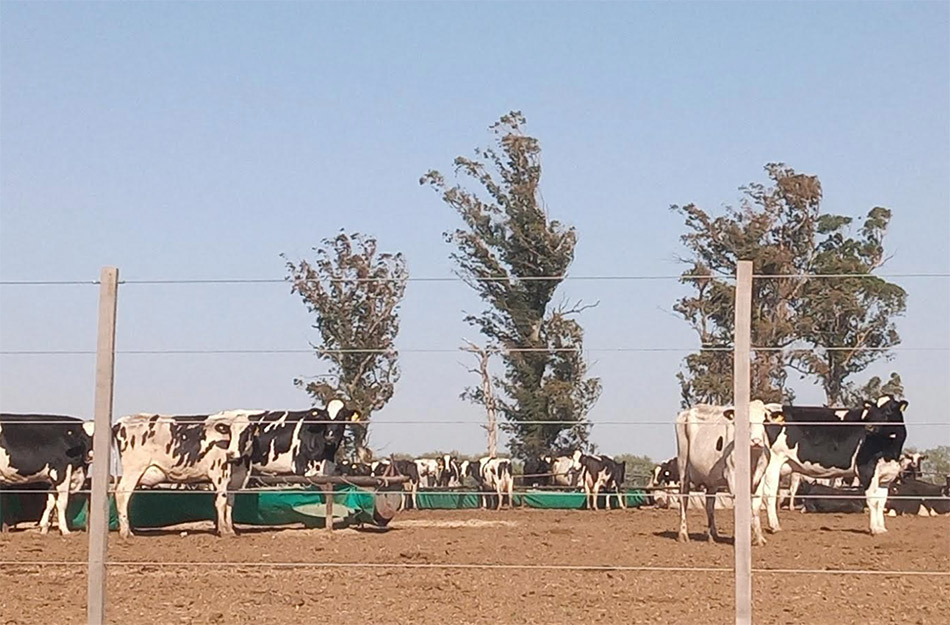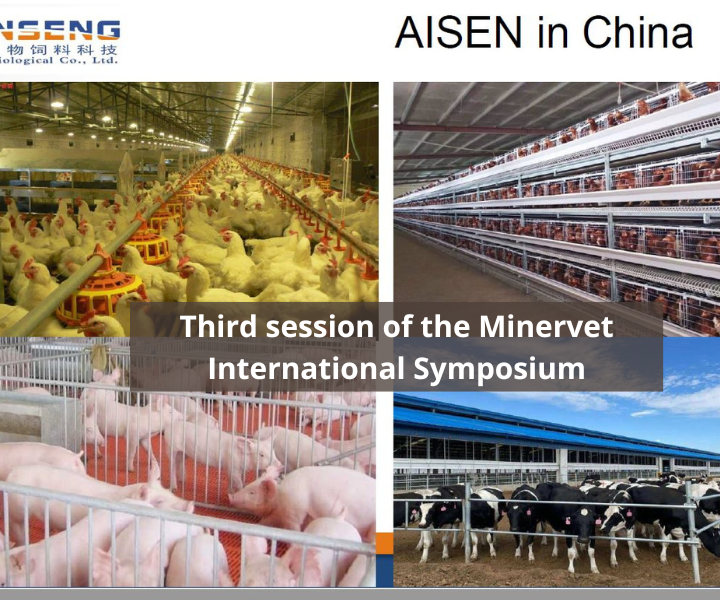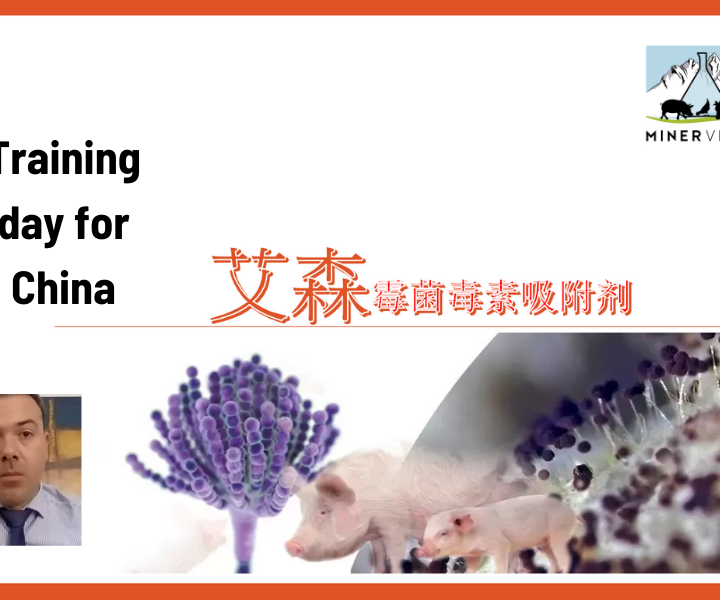
Poultry slaughtering failures: Insensitizing failures
21 de March de 2024
MINERVET at AMEVEA 2024 with QUÍMICOS GOICOCHEA
10 de June de 2024Fungal contamination of cereals and pastures is a natural occurrence. Different genera of fungi, growing on food, can develop small molecules with varied chemical structure and activity called mycotoxins. This fact is related to alterations in the fungal metabolism, such as the interruption in the reduction of ketone groups used in the biosynthesis of fatty acids (Bauza, 2007).
The production of toxins as part of the competition with other microorganisms to access plant nutrients is another hypothesis validated by scientists.

“More than 25% of the world’s cereals are contaminated by mycotoxins of different types.” (Bártoli, 2001).
Climatic and geographical conditions, which vary in each region of the world, influence the occurrence of higher levels of intoxications associated with fungi growing in food. These intoxications, called mycotoxicosis, cause problems in humans and animals and are important issues in public health.
“The problem related to this type of pathologies is their hidden impact”.
Mycotoxins act on different organic systems in very diverse ways, being the cumulative effect and the synergic action the most risky ones.
In ruminants, silages and by-products in wet form can contribute more fungi than dry forages. In the case of silages, the risk will be greater if the conditions of anaerobiosis and pH decrease have not been reached.
In diets of animals in high production, such as dairy cattle, the variety of ingredients used in the formulation produces a dilution in the concentration of toxins. This generates, in animals, non-specific symptoms in cases that tend to chronicity.
During the summer season, rainfall tends to be higher, triggering the predisposition to the formation of contaminating fungi.
Humidity conditions (as the main factor) of 13-18%, warm temperatures ranging from 15-30 ᵒC (certain fungi can grow at much lower temperatures), the presence of oxygen and a wide range of pH allow the development of fungal contaminations.
The problem lies in the non-specific effects that toxins produce in organ systems, complicating their specific diagnosis.
In ruminants, AFLATOXINS are known for their ability to metabolise and transfer to milk (aflatoxin B1 in the form of aflatoxin M1). This new transformed mycotoxin has oncological potential in humans due to the consumption of contaminated milk and dairy products.
Within the animal organism, they produce a variety of negative effects such as reduced consumption, reduced weight gain, liver damage, infertility, embryonic mortality, among others.
The other toxins of productive interest follow the same trend. Except for some characteristic signs, animals show unspecific alterations that may be common to a variety of pathogens or management conditions.
TRICOTECENES (DON, T2, DAS, HT-2) which may be present in field crops, cause reduced consumption, reduced production rates, damage to digestive, reproductive and immune systems.
ZEARALENONE which undergoes ruminal metabolism and is modified into metabolites with a greater oestrogenic effect (α and β zearalenol). It generates reproductive symptoms related to irregular cells, abortions, embryo reabsorption and signs such as vaginitis or mammary gland hypertrophy.
FUMONISIN and OCRATOXIN will follow the same trend causing nephrotoxic and hepatotoxic syndromes, immunosuppression, reproductive failure and alteration of production parameters.
“In dairy farming it is hypothesised that chronic intoxication leads to a constant inflammatory state”.
Since these contaminants occur naturally in the environment, actions to reduce their impact are oriented towards good agricultural practices including: use of resistant crops, crop rotation practices, strict management of environmental variables in storage, integrated pest management, selection and discarding of grains and permanent use of mitigating agents that will reduce the incidence of damage.
The last measure, oriented towards the use of trapping agents, aims to provide a tool to reduce the damage generated by the absorption of toxins at the intestinal level.
Inorganic mineral binders, consisting of different types of aluminosilicates, have proven to be the simplest, most cost-effective and efficient tool to mitigate the negative effects of these pathologies.
The binding capacity comes from their high surface area, swelling capacity, plasticity and cation exchange capacity.
Within the intestinal lumen it binds molecules by polarity difference and, having a high external surface area, binds to polar mycotoxin molecules present in the lumen. This new formation is not absorbed and is eliminated during defecation.
Incorporated in low doses and in homogeneous mixture with cereals, it has been shown to have protective and preventive effects against mycotoxin damage.

Evangelina Zarate
Med. Vet. Dipl. en Fitoterápicos




